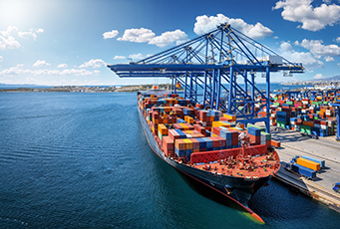
Developing economies worldwide are coming under pressure as their countries’ currencies depreciate against the U.S. dollar. Is this economic pressure due to their own shortcomings, and therefore contained within their borders, or should we be concerned about a contagion risk that could spread to the global economy? And what does this mean for your portfolio?
Why Are Emerging Markets’ Currencies Depreciating?
This rapid emerging-market currency depreciation is the result of several factors. Perhaps the largest factor—and this is up for debate—is the United States Federal Reserve’s push to raise interest rates. U.S. rates had been held near zero for almost a decade, in an effort to spur economic growth following our own financial crisis. This freeze on interest rates motivated investors to borrow cheap U.S. capital and invest it in much higher-yielding emerging markets.
As our economy improved over the past decade, the Fed began raising interest rates. This caused the interest rate differential between the U.S. dollar and the emerging market currencies to narrow, making the higher-risk emerging market currencies less attractive. This trend results in money flowing back toward the U.S. dollar from the emerging market currencies, increasing the dollar’s value against them.
But the Fed isn’t single-handedly responsible for the crisis. Many emerging economies also carry large debts that are denominated in U.S. dollars instead of their own currency. Why? Issuing debt in a more stable, marketable currency rather than their own more volatile currency gets them a much lower interest rate on the debt. However, when they issue dollar-denominated debt, they become subject to exchange rate risk. If their local currency drops in value versus the dollar, then their cost of paying down that debt becomes more expensive.
Turkey and Argentina: Domestic Issues or Omens of Global Ripple Effects?
Is the surging U.S. dollar the root of the emerging market concerns? Or has its surge exposed specific domestic issues within certain countries?
Let’s look at a couple examples.
The Turkish lira has recently been battered by a mix of factors: U.S. rate hikes, confrontational politics and economic policy confusion. As of August 31, the lira was down 44 percent versus the dollar so far this year. While Turkish President Recep Tayyip Erdogan urged the Central Bank of the Republic of Turkey to maintain the status quo on the interest rate, last week it increased its main interest rate to 24 percent from 17.75 percent. Besides helping to curb rampant inflation, the move showed investors that the central bank wasn’t controlled by Erdogan. It’s too early to know the full impact of this decision, but immediately following the announcement we saw a slight uptick in the lira compared to the U.S. dollar.
Argentina also recently made headlines when President Mauricio Macri called for early payment on a $50 billion bailout package from the International Monetary Fund — a big sign that Argentina is in danger of defaulting on its debts. As of August 31, the Argentine peso was down 52 percent versus the U.S. dollar thus far in 2018. According to Moody’s Investors Service, nearly 70 percent of Argentine government debt is in foreign currencies, which will become more and more difficult to repay if the peso continues to plummet. Unlike Turkey, Argentina has taken extreme measures to combat the falling peso. In late August, Argentina’s central bank increased its key interest rate to a staggering 60 percent to encourage investors to hang on to their pesos.
Is the Global Economy at Risk?
The big question is: Are Turkey and Argentina outliers, or should they be taken as an early warning sign for how the global economy will react to rising U.S. interest rates?
Remember the Asian financial crisis of the late 1990s? Thailand’s baht was devalued as a result of elevated foreign debt levels and depletion of foreign reserves. This eventually rippled throughout global markets, prompting multiple International Monetary Fund bailout packages. So far only the most vulnerable economies have succumbed to the current emerging market crisis, but others are potentially at risk.
The Wall Street Journal estimates that some 48 percent of the world’s $30 trillion in cross-border loans are denominated in U.S. dollars. That’s up 40 percent from a decade ago! The overall negative effects of the dollar movement could continue to impact weaker economies that are dependent on it. U.S. interest rates are still historically low, even with the Fed’s plans to increase them further before the end of 2018. A good argument could be made that global economic stress among weaker economies could increase as the Fed continues its monetary tightening.
Summary
So, why should this matter to you? If your portfolio is exposed to economies that are negatively impacted by rising U.S. interest rates or exchange rate movements with the U.S. dollar, you could be taking on additional risk. Now’s the time to review your portfolio to ensure you’re comfortable with the amount of risk you’re taking!
Recommended Articles
Private Equity and M&A in a Low-Rate World
Deal flow is the stream of business proposals, investment...
The Bonds that Tie – An Exciting Look at Fixed Income
With today’s yields being much higher than the close to...
Is America’s Tariff War Reshaping the U.S. Economy?
The 2025 tariff regime marks the highest average...





